Best cheapest 4K GPUs for Gaming/Video
Looking for the best cheapest 4K GPUs for gaming/video? We have list down and reviewed 6 of the best GPUs for gaming and videos here.
Online gaming is becoming increasingly popular in recent years. For gaming displays, 1440p 144hz has become the norm. Resolutions are being pushed higher and higher with each new game released. 1440p 144hz gaming allows you to play at high quality with ultra-low latency, giving you a significant competitive advantage in these intense multiplayer games. For that very reason, it is crucial for you to pick the best possible option available to you and this article is going to do just that for you.
Choosing the finest 1440p graphics cards is more challenging than you would imagine. With all of the possibilities available, choosing a graphics card is already a difficult task. And there are a few things to bear in mind if you’re attempting to build your all-new gaming PC. One thing to note is that you should know what is a good idle GPU temperature.
Regardless of your budget (see also the best GPUs under $1000), I am here to help you simplify the process and locate the finest 1440p graphics card for you. So, without further ado, let us take a look at my handpicked list for the best 1440p gaming experience.
We also have an article here for the best GPU Under $100.
| Award | Model | Price |
|---|---|---|
| Best Premium GPU for 1440p 144Hz Gaming |
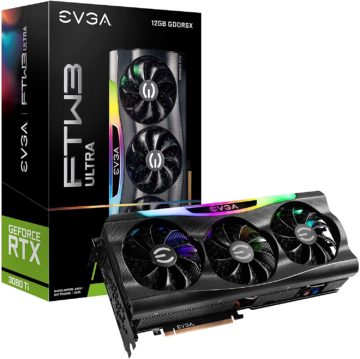 EVGA GeForce RTX 3080 FTW3 Ultra
EVGA GeForce RTX 3080 FTW3 Ultra
|
Check Price Read Customer Reviews |
| Great Overall Pick for 1440p 144Hz Gaming |
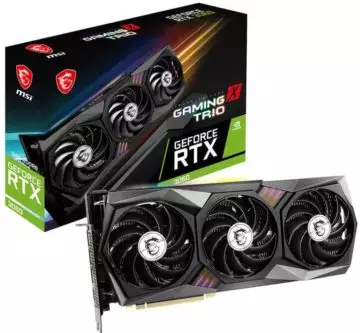 MSI GeForce RTX 3060 Ti Gaming X Trio
MSI GeForce RTX 3060 Ti Gaming X Trio
|
Check Price Read Customer Reviews |
| Great High-End Pick for 1440p 144Hz Gaming |
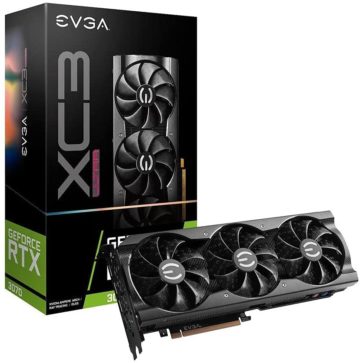 EVGA RTX 3070 XC3 Ultra Gaming
EVGA RTX 3070 XC3 Ultra Gaming
|
Check Price Read Customer Reviews |
| Great Mid-Range Pick for 1440p 144Hz Gaming |
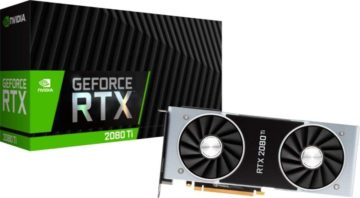 Nvidia GeForce RTX 2080 Ti
Nvidia GeForce RTX 2080 Ti
|
Check Price Read Customer Reviews |
| Best Budget Pick for 1440p 144Hz Gaming |
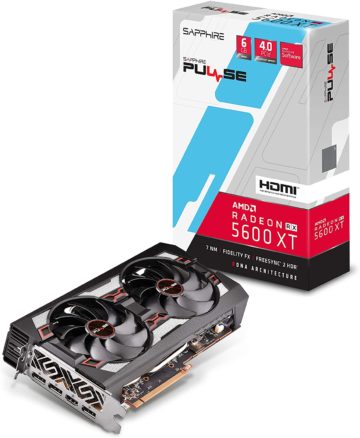 Sapphire Radeon Pulse RX 5600 XT
Sapphire Radeon Pulse RX 5600 XT
|
Check Price Read Customer Reviews |
| Great Budget Pick for 1440p 144Hz Gaming |
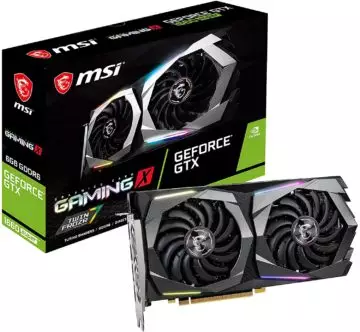 MSI GTX 1660 Super Gaming X
MSI GTX 1660 Super Gaming X
|
Check Price Read Customer Reviews |
The EVGA GeForce RTX 3080 has 8704 CUDA cores, which is more than twice as much as the RTX 2080. It comes with 10 GB of GDDR6X RAM and 760 GB/s memory bandwidth, which is 70% greater than the RTX 2080. The Boost Clock has a frequency of 1800 MHz, which is 5% faster than the baseline model.
The EVGA GeForce RTX 3080 FTW3 Ultra is a graphics card built for high-end gaming with Ray Tracing and 1440p gameplay with a high refresh rate. It is the ideal option for you if you require a graphics card that can run any game at 1440p 144hz with Ultra Graphics settings.
NVIDIA has made significant advancements over its previous-generation graphics card. The EVGA RTX 3080 is over 38-40% quicker in 1440p gaming than the RTX 2080 Ti and 62-65% faster than the RTX 2080. When compared to the RTX 3080, the GTX 1080 Ti and AMD RX 5700 XT are twice as slow. This performance comparison demonstrates that it is capable of running any AAA title at 1440p 144Hz with ease.
Competitive gamers don’t just play games for 1-2 hours; they routinely play for over 4-6 hours. Overheating of the GPU can occur when playing for lengthy periods of time, however the EVGA RTX 3080 remains cool even after hours of play. The GPU fans are rather quiet, so gamers will also not be bothered by the noise but if you experience hearing unusual bussing noise from your graphics card, know the causes and fixes in this article.
MSI’s RTX 3060 Ti is a high-end graphics card. When compared to the RTX 2060 Super, it contains 4864 CUDA Cores, which is more than twice. It features a Boost Clock speed of 1830 MHz, which is 10% faster than the Founders Edition, making it 3 percent quicker. The GPU has 8 GB of GDDR6 memory with a 14 Gbps clock speed.
For gamers that use a 1440p 144Hz monitor, the RTX 3060 Ti is a good choice. It has the processing power to run most AAA games at 1440p 144Hz with Ultra Graphics settings. However, to obtain 144+ FPS in more demanding games like Fortnite and COD: Warzone, you must drop several visual settings.
The MSI GeForce RTX 3060 Ti Gaming X Trio outperforms the Nvidia RTX 2080 Super FE by over 7% and the RTX 2060 Super by 40-42 percent. The RTX 2060 Super and RTX 3060 Ti have the same launch pricing, but their performance is vastly different.
The heatsinks on the MSI RTX 3060 Ti Gaming X are fantastic. The GPU operates at very low temperatures and produces very little noise. The power consumption is good as well, although FE uses less. You may also overclock this GPU to acquire 7-8 percent more performance if you want to get higher FPS.
If you want to know if RTX 3060 is better than RTX 2070, we have compared the two in this other article that we have.
The EVGA RTX 3070 FTW3 Ultra has 5,888 CUDA Cores and a fantastic 1815 MHz boost clock speed, making it 4% faster than the RTX 3070 FE. The GPU comes with an 8 GB GDDR6 memory module with a 14 Gbps clock speed.
The EVGA RTX 3070 FTW3 Ultra is a premium card intended for 1440p Max Out gaming withRTX enabled, but it’s also a great option for 144Hz for 1440p high refresh rate players. Almost every Esports game can be played at 1440p 144Hz with High graphics settings making it more powerful than the RTX 2080 Ti.
This GPU’s Triple Fans do an outstanding job of keeping the card cool. The cooling performance is substantially superior to the Founders Edition. The coolers are a little noisy, but thanks to the dual BIOS, you can decrease the noise level or lower the temperature. Although the fan noise is perceptible, it is still less than that of the NVIDIA RTX 2080 Ti. It outperforms practically every premium RTX 3070 variant when it comes to overclocking. For recommendations for the best CPUs for RTX 3070, check this article.
Nvidia’s GeForce RTX 2080 Ti is the greatest consumer-grade video card available for gaming right now. While the Titan RTX has greater raw power than the 2080 Ti, it costs $1,500 more and offers just a 20% gain in gaming performance. However, the RTX 2080 Ti is still a pricey video card, and the RTX Super series has further reduced the value of the 2080 Ti. When money isn’t an issue, this is the card to acquire because you can virtually get two 2080 Supers for the same price.
If you want to game at 1440p with ray tracing on a regular basis, the 2080 Ti is one of the best cards on the market right now that can give high frame rate gaming with RTX enabled. The effect is extremely GPU heavy, even on the RTX series, which have specialized raytracing cores. Even when compared to the 2080 Super, the 2080 Ti’s increased RAM and horsepower make a significant impact. If ray tracing is one of your main motivations for upgrading your GPU, the 2080 Ti is the best option if you want to play at 1440p — and it’s even fine for 4K.
Overall, the 2080 Ti has a high price tag, but thanks to ray tracing, it delivers excellent performance.
For any gamer, the Sapphire Pulse RX 5600 XT delivers outstanding performance at an affordable price. The Pulse RX 5600 XT is the best graphics card for 1080p gamers, but with some tweaks in graphics settings, it can be an ideal budget option for 1440p gamers as well.
It comes with blazing fast GDDR6 memory and revamped display and media engines. It’s driven by AMD’s advanced RDNA architecture, as well as our cutting-edge Dual-X Cooling Technology, which keeps the GPU, Memory, and VRM components ice-cold while generating minimum noise. The fully aluminum-covered backplate maintains the GPU’s stiffness and ensures that nothing bends, dust is kept out, and additional passive cooling is provided to disperse heat.
Quick Connect Fan, Dual Bios Support, and Dual Ball Bearing Fans are key Sapphire features that keep your GPU functioning smoothly and reliably.
All in all, The Sapphire Pulse RX 5600 XT offers great value for your money. When gaming, the GPU operates very quietly, nearly inaudibly. The cooling performance is likewise decent, although it may be better. Although the ASUS Rog S Trix version has the greatest cooling, it is also the costliest.
The MSI GTX 1660 Super Gaming X, like the GTX 1660, comes with 1408 CUDA cores. The GPU Boost Clock Speed is 1830 MHz, which is over 3% higher than the reference model. It contains a total of 6 GB RAM that is clocked at 14 Gbps making the GTX 1660 Super superior over GTX 1660 Ti.
The GTX 1660 Super falls between the GTX 1660 and the GTX 1660 Ti in terms of performance. Its capability is pretty similar to that of the GTX 1660 Ti. This GPU is optimized for 1080p Ultra Graphics gaming; however, you can play a variety of AAA titles at 1440p 144Hz. Now if your curious if 1080p will look bad on a 1440p monitor, you can check this article here. Bear in mind though, that it is roughly 2% slower than the GTX 1660 Ti in 1440p gaming.
MSI did a great job when it comes to the coolers. When gaming, this GPU is exceptionally quiet and cool. The option to turn off the fan while it’s not in use is also incorporated. This MSI version of the GTX 1660 Super boasts one of the greatest cooling systems when compared to other GTX 1660 Super variants. You may also get a few more frames per second by overclocking this GPU. If your game is currently operating at 132 frames per second, you may simply increase it to 144 frames per second by overclocking.
On an ending note, I’d like to state that the MSI GTX 1660 Super Gaming X is the finest affordable option for 1440p gaming. It has nearly every nice feature, such as outstanding cooling system, efficiency, VR-Support, overclocking, and so forth.
Every graphics card that is best for 1440p 144Hz has been covered in this article. Now, whether you want a top-of-the-line GPU or a budget GPU depends on your requirements.
The EVGA RTX 3080 is the best overall option because it is a future-proof 1440p 144hz card with a better DLSS option. If you prefer AMD graphics cards, the PowerColor Radeon RX 6800 is the best alternative because it performs similarly to the RTX 3080.
The Sapphire RX 5600 XT may be the best GPU for 1440p 144Hz if you’re on a budget or want to play at competitive or medium graphics settings.
When you purchase through our links, we may earn an affiliate commission at no additional cost to you.